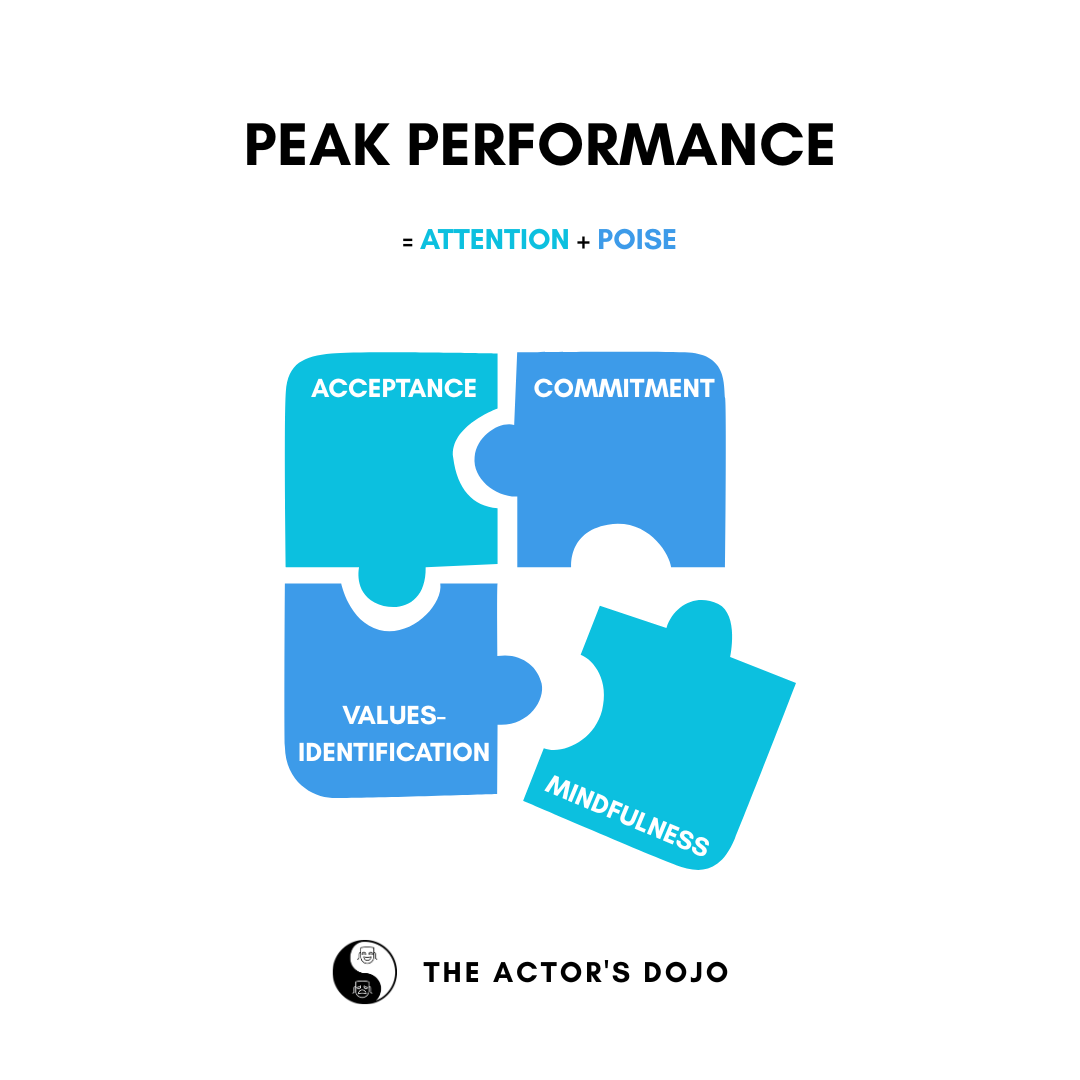Making Peak Performance Concrete
Acting is a magical craft. But unlike in the craft of magic, acting can be just as baffling and mysterious to those doing it as to those observing it. As we're vocal in advocating, the acting field could gain a lot from a little "science".
In this article, we'll explore one such aspect: peak performance. Rather than invoking the phrase "peak performance" without providing any insight on what it is or how we attain it (the standard practice in acting training), we'll break it down to an evidence-informed (gasp!) framework.
We needn't be afraid of underpinning some of what we actors do with a bit of science. An observer's experience of magic isn't diminished by a magician understanding their craft.
Meaning
Let's start by defining peak performance. We've yet to encounter a drama school or acting institution that explicitly spells this out for its students, which is kinda cray.
Admittedly, there are many definitions of peak performance. Simultaneously, there are very few that are actor-specific. But just because something is difficult doesn't mean we shouldn't do it.
As OG Dojo homies would know, we alchemise sport psychology and sports coaching research into evidence-informed principles and practices for actors. So, we draw on the sport sciences research and broadly define peak performance as the "superior use" of our individual potential.[1]
Central to most modern definitions of peak performance – at least from the sport sciences – is that it is context-dependent. Rather than a universal and objective standard, peak performance exists within the parameters of each individual and environment.[2]
So, to recap, here's the definition: the superior use of our individual potential.
Mechanisms
One of the main influences on the Dojo's coaching philosophy is the Mindfulness-Acceptance-Commitment (MAC) protocol.
For those who like a peek under the hood, the MAC protocol essentially combines two well-established therapies (Acceptance Commitment Therapy and Mindfulness-Based Cognitive Therapy) and tailors this mashup for performance, rather than clinical, outcomes.
A super cool feature of the MAC protocol is that it makes peak performance so concrete. Instead of leaving this concept ambiguous and intangible (à la actor training), it breaks peak performance down into smaller and smaller chunks, each easy to a) understand and b) work with.
The MAC protocol tells us that the mechanisms underpinning peak performance are the "enhanced regulation of attention and poise".[3]
Breaking this down further, attention is defined as "the capacity to pay attention to task-relevant information as needed" and poise as "the ability to act in the service of values and goals despite negative internal states".[4]
Breaking this down further again, the MAC protocol explains that we can influence the quality of our attention via mindfulness and acceptance. Similarly, we can influence the strength of our poise via values-identification and commitment.
Now, this can sound like word salad at first, but it's actually an incredibly empowering recipe for getting to peak performance. In sum, training in mindfulness, acceptance, values-identification and / or commitment increases the likelihood of regular and sustainable peak performance.

Isn't that clarity helpful? Isn't it waaay nicer to just know that a concrete definition and mechanism of action exists than hoping this mysterious "peak performance" will fall from the sky and bestow its gifts on you? Isn't that tangibility empowering?
If you'd like to explore applying this to your personal practice, our 1-On-1 coaching sessions can do just that. If you'd like your drama school or acting institution to have us visit, link them to our Workshops page. We'd love to jam with you and continue making actor peak performance a little more concrete 🪨
Thoughts / feedback / challenges? We'd genuinely love to hear.
Need some 1-On-1 attention? Book your coaching session today.
Citations:
[1] https://doi.org/10.1123/tsp.6.2.156 (p. 156)
[2] https://digitalscholarship.unlv.edu/cgi/viewcontent.cgi?article=1054&context=scholarship_kin (p. 1)
[3][4] https://amzn.to/4iLf3K3 (p. 67)
